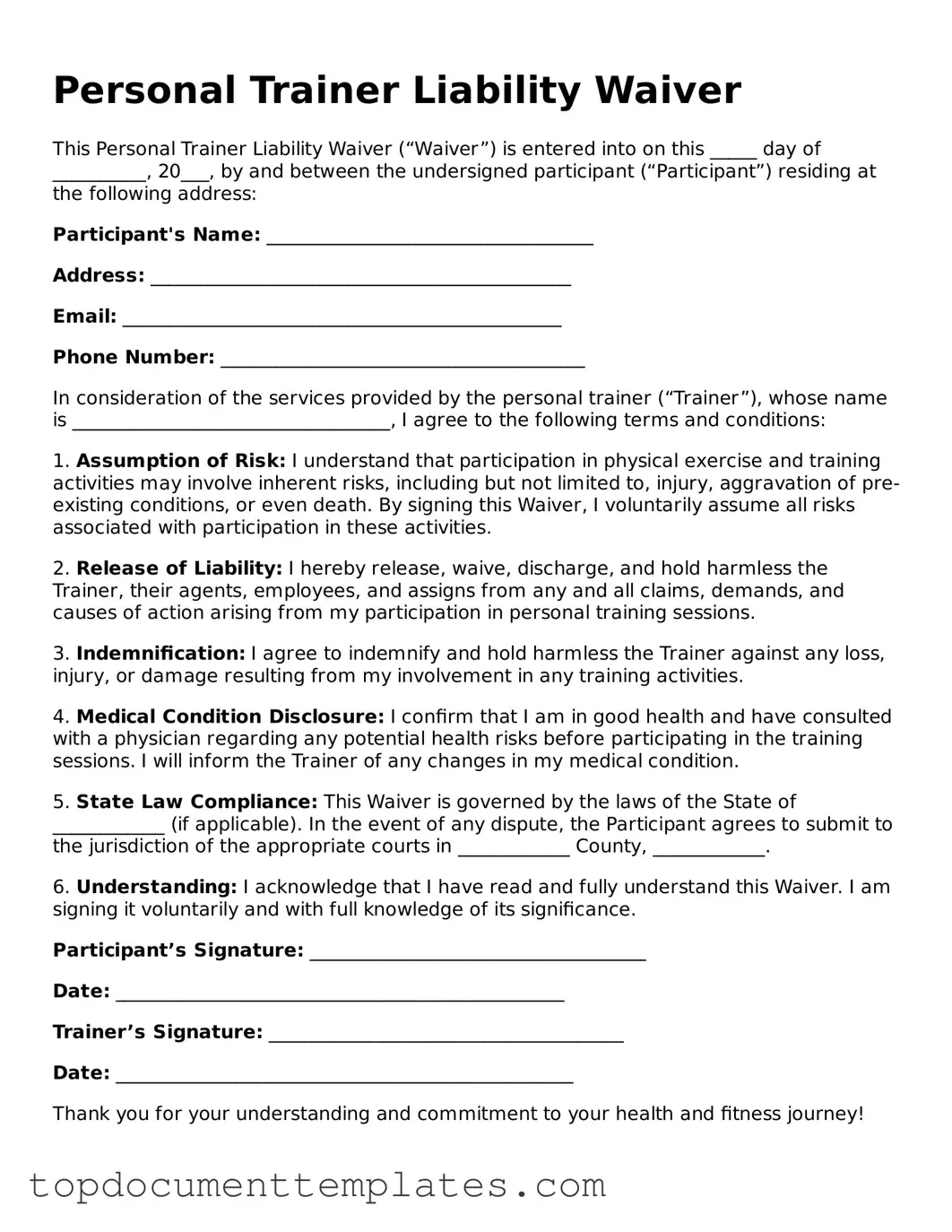The Personal Trainer Liability Waiver form serves as a crucial document for fitness professionals and their clients, establishing a clear understanding of the risks associated with physical training. This form typically outlines the responsibilities of both the trainer and the client, emphasizing the importance of informed consent. By signing the waiver, clients acknowledge potential hazards related to exercise, including injury or health complications, and agree to assume these risks. Additionally, the form often includes clauses that limit the trainer's liability for accidents that may occur during training sessions. It is designed to protect trainers from legal claims while also promoting transparency in the trainer-client relationship. Clients may find that the waiver encourages a more open dialogue about their health history and fitness goals, ultimately fostering a safer training environment. Understanding the elements of this form is essential for both parties, as it lays the groundwork for a professional and secure fitness journey.
